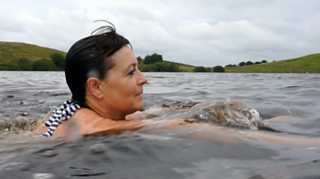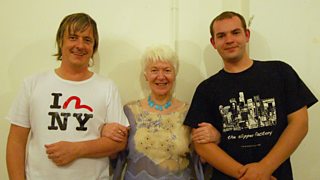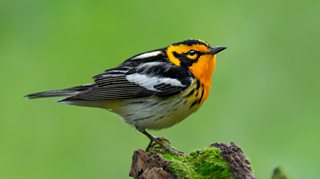7 simple first aid techniques that can help save lives
10 November 2017
Would you know what to do in a medical emergency? Brian McNally of the gave Fiona Stalker from a guide to basic first aid.
Get to know the recovery position
The recovery position is used when someone has fainted or is unconscious but still breathing.
“You don’t want to overthink it”, says Brian. “It’s just getting somebody on to their side and tilting their head back.
“We put them in a safe position whilst we wait for additional help and support to arrive.”
Doing this allows the patient to breathe and allows any vomit to drain away safely.
“Keep talking to the patient,” says Brian.
“You may be panicking inside but it’s important to keep that calm exterior.”
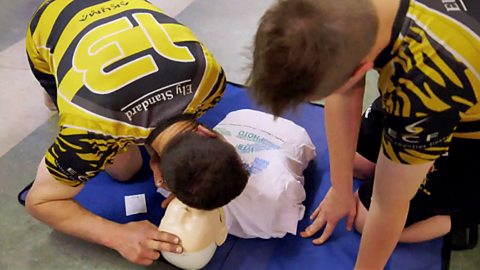
What to do if someone collapses in front of you
Dr Saleyha Ahsan shows how you can save the life of someone who suddenly collapses.
How to help someone who’s choking
Firstly, establish whether the person is choking or simply coughing.
According to Brian, “If they’re choking it’s about bending them over [and] hitting them firmly between the shoulder blades up to five times. If those don’t work we can use abdominal thrusts.”
To do this, stand right behind the person, wrap your arms around the torso just above the belly button then clasp your hands together to form a fist. Bend them forward and pull your hands sharply inwards and upwards. Repeat up to five times. This should remove the obstruction.
Make sure the person gets checked over by a medical expert afterwards in case any damage has been caused. This procedure shouldn't be carried out on a child under 12 months.
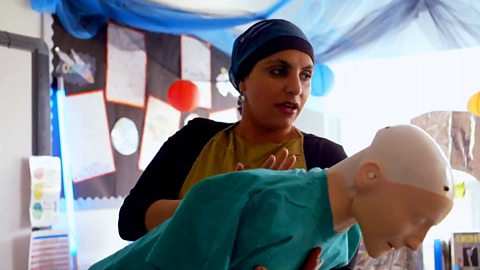
What to do if someone starts choking
Dr Saleyha Ahsan shows how you can save the life of someone who starts choking.
Dealing with bumps to the head and concussion
“Trust your instincts following the initial hysteria”, says Brian.
Following a bump to the head the first step is to apply a cold compress. Everyday objects work well in first aid and the compress could be something as simple as a bag of peas from the freezer.
When the patient has settled down, check for signs of concussion.
“Some of the warning signs are excessive tiredness, feeling sick or being sick and dizziness”. If any of these are on show, it’s time to have the patient checked out by a medical professional.
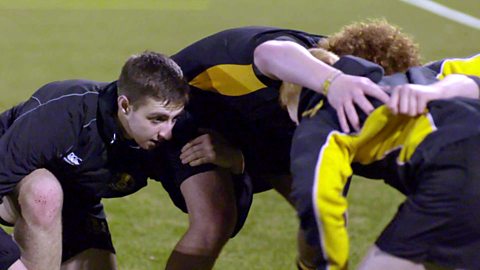
How to recognise and respond to concussion
Concussion can happen to any of us so it’s vital that we all know how to recognise it.
How to cope with stings, bites and subsequent allergic reactions
For many of us stings or bites will cause only minor irritation, but for others they can be incredibly dangerous.
“We want to check there isn’t an extreme allergic reaction,” says Brian. “That can present itself as a rash that appears within minutes, swelling around the mouth, the throat, the face and the chest, or difficulty breathing. This is when we would prioritise a 999 call.”
For minor stings Brian recommends reaching for your purse or wallet.
“Rather than using tweezers to pull out the stinger, we recommend using a debit or credit card to scrape it away, or use your finger. If you use a tweezer you’re potentially going to push the poison or the venom in, so scrape it out and apply a cold compress.”
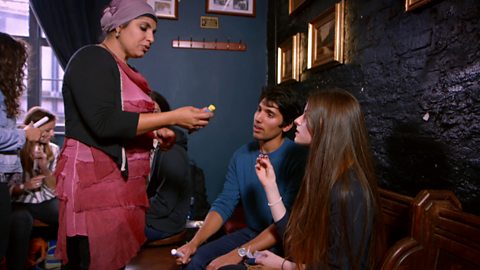
How to save someone suffering a severe allergic reaction
Dr Saleyha Ahsan demonstrates how to deal with life-threatening anaphylaxis.
How to stop a nose bleed
Different generations may disagree on the best way to deal with nose bleeds, but Brian advises following current guidelines.
You may be panicking inside but it’s important to keep that calm exteriorBrian McNally, British Red Cross
“Pinch the nose just below the bony part [and] tilt the head forward to stop the blood running back into the throat. It can go into the stomach and make you feel sick, so we prefer to tilt the head forward.
“Pinch it for a minimum of five minutes and let go, try not to let go too early because the blood is clotting. If it’s still bleeding pinch it for another five minutes and just keep that going until that blood stops.”
How to treat minor cuts
If dealing with a cut it’s important to clean the wound then cover it so nothing will cause an infection. Remember, anything can be used as a bandage, even a clean tea towel or a clean piece of clothing.
Brian says, “The one piece of advice I would always remember is to wrap the bandage round either side of the wound. You want to make sure there’s no bacteria slipping in under the bandage.
“A little tip at is to tie it off at the end; tie it on top of where the cut is, that just adds a bit of extra pressure to stop that bleeding.”
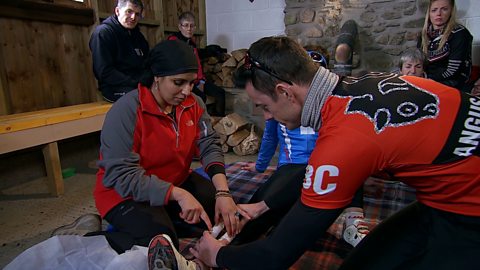
What to do if someone is bleeding severely
A&E doctor Saleyha Ahsan demonstrates what to do if someone is bleeding severely.
Spotting hypothermia in children
As the days become colder, Brian advises keeping an eye on young children.
“Wee ones can cool down quicker than adults, so if they’re starting to shiver or [are] becoming lethargic while they’re out and about just bring them into the warm. Heat them up gradually, don’t throw them into a hot bath.
“Take off wet clothing, wrap them in dry clothing, [give them] a nice warm drink, maybe a bit of sugar as well.”

What to do if you encounter someone suffering from hypothermia
A&E doctor Saleyha Ahsan shows what to do to save someone with hypothermia.
What’s in your first aid kit?
You may have a first aid kit in your house or office, but do you know what‘s in it? Don’t wait for an emergency, look inside now and get to know what items it contains and how to use them.
Out for the Weekend
Latest features from ±«Óãtv Scotland
-
![]()
'Wild swimming helps me process the grief of losing my son'
The benefits of cold water therapy.
-
![]()
Winter adventures are appealing, but an expert advises caution
Trips in winter require particular knowledge and skills.
-
![]()
The rescuers: Why volunteers risk their lives in mountain emergencies
Landward meets members of the Cairngorm Mountain Rescue Team.
-
![]()
‘Look for the light’ – practical tips to help you through another winter with SAD
Useful advice and tips to combat low moods at this time of year.
-
![]()
How you could be a binge drinker without even knowing
Binge drinking is classed as fewer units than many people may realise.
-
![]()
How chocolate biscuits and drama classes helped one man leave prison behind
The healing power of creativity.
-
![]()
'When people believe in you, it’s life-changing'
Author Graeme Armstrong revisits the man who helped turn his life around.
-
![]()
The 'breath-taking' display of US birds swept on to British soil
Recent storms have brought rare birds to our shores.
-
![]()
Six things we learned about Alan Cumming on Take the Floor (Spoiler: includes accordions)
The actor spoke to Take the Floor's Gary Innes.
-
![]()
How street gangs trap young men in a dangerous cycle of violence
The almost inescapable pull of life in a gang.
-
![]()
Why stylist Gok Wan believes there's no such thing as bad fashion
The fashion expert says we should stop following rules and do what feels right.
-
![]()
Is sending a CV still the right way to apply for a job?
They've been central to job applications for years, but are they worth it?

